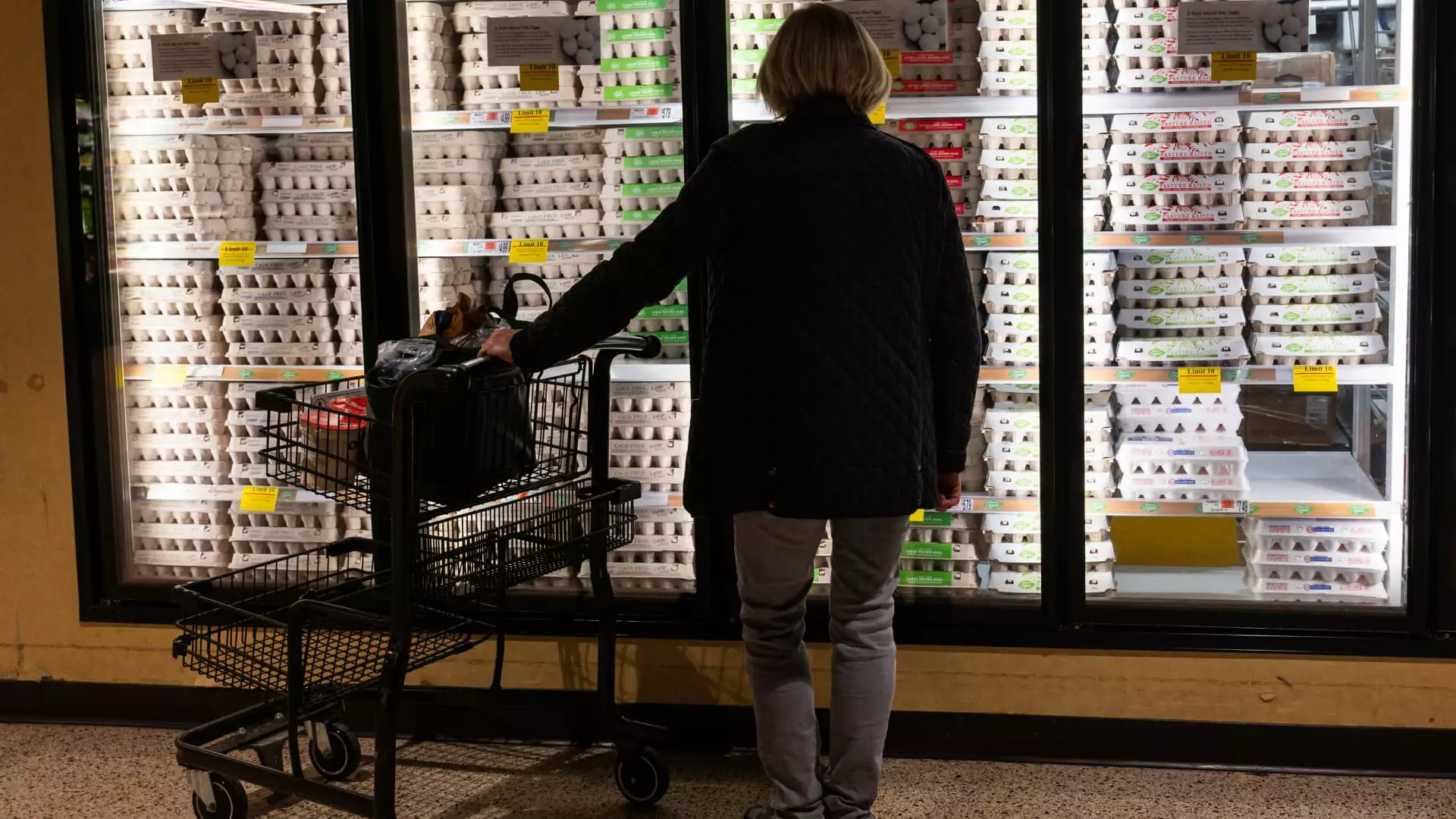In a country where breakfast staples seem to fluctuate with the seasons, the price of eggs has recently soared to unprecedented heights. Wholesale egg prices reached an astonishing $8.58 per dozen, but relief appears to be on the horizon as they have plummeted to about $4.83 per dozen in a short span. While this dramatic decline should be a cause for celebration, the path to lower retail prices remains convoluted and riddled with uncertainty. Are consumers truly out of the woods, or is this just another twist in a tale fraught with economic turmoil? The overarching question digs deeper than mere supply and demand; it probes the very stability of our food pricing mechanisms.
The egg crisis serves as a mirror reflecting much larger systemic issues in food production and distribution. Millions of egg-laying chickens perished due to bird flu outbreaks, significantly curtailing supply and driving prices skyward. Yet, just as consumers are beginning to breathe easier with falling wholesale prices, the question remains: how long will it take for these reductions to trickle down to the checkout aisle? History suggests that consumers often feel the aftershocks of market volatility much later than they should—Retailers frequently exploit pricing lags without hesitation. As consumers grapple with grocery bills that have doubled in a year, it’s hard not to view the recent price drops as temporary relief rather than long-term solutions.
Consumer Behavior and Market Dynamics
Consumer psychology plays a pivotal role in the dance of prices. The rise in egg costs led many households to stockpile, a throwback to the initial panic buying during the COVID-19 pandemic. We saw a similar trend: consumers feared that escalating prices would force them into a corner with no bargains. The demand for eggs is hardly elastic, making any lingering apprehension about future price increases potent enough to keep stockpiling behavior intact. According to analysts, hens laid fewer eggs in response to decreased demand, leading to a vicious cycle that complicates the overall assessment of the market.
Retailers, too, bear their share of the blame. Many grocery stores imposed purchase restrictions as panic set in, only to watch as consumer demand dwindled. This intertwined web of fear, scarcity, and corporate strategy generated a level of unpredictability that leaves consumers uncertain about what they will find on the shelves. The U.S. Department of Justice’s recent antitrust investigation into major egg producers is illustrative of the skepticism surrounding corporate pricing practices. How much profit margin is justified when millions of chickens are lost, and how much is sheer opportunism? The line is murkier than it should be, particularly as corporate practices come under scrutiny.
The Influence of Seasonality and Holidays
Another complicating factor in the egg pricing saga is seasonality. The approach of Easter this year, set to take place on April 20, inevitably spurs an uptick in egg demand as households prepare for traditions that involve this versatile food. The surge in demand during holiday seasons represents a classic example of how external timelines can exacerbate or alleviate existing price tensions. Are we fostering an economic environment that prioritizes profit over consumers’ needs? As prices fluctuate, the burden increasingly falls on the consumer, who is left guessing how this seasonal spike might erode any gains from declining wholesale prices.
While experts express cautious optimism about a decline in wholesale prices, the continued demand amid seasons and celebrations complicates the narrative. If retail prices don’t follow suit quickly, it empowers consumers to become even more disenchanted and disengaged from purchasing eggs altogether, causing further ripples in the market. The rebellious attitude of consumers can lead to long-term consequences, prioritizing other protein sources and leaving egg suppliers in the lurch.
The Long-Term Outlook: An Unsettled Market
In the end, the volatility of egg prices is a striking reminder that our food supply systems are anything but stable. The question lingers—will consumers genuinely benefit from the recent wholesale declines? Or will the shadows of manipulation and market strategy loom large over everyday purchases? With an economy fraught with uncertainty and consumer trust wavering, we find ourselves at a crucial junction. We need a reevaluation of how prices are set, both to reflect true market dynamics and serve the consumer better.
As the eggs lay nestled in their cartons, we’re left with the pressing reality that bright, sunny mornings may not guarantee low grocery bills. In the world of eggs, it seems a shell-shocked public may have more waiting ahead.

